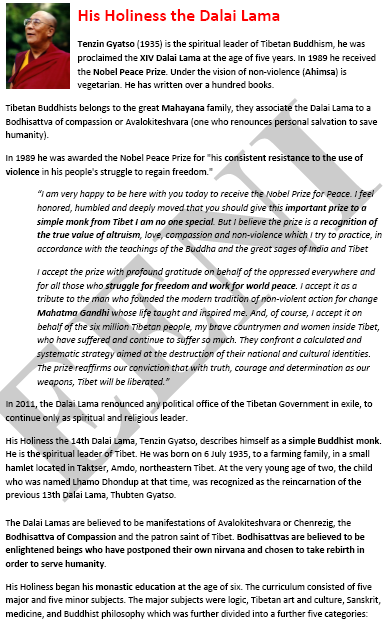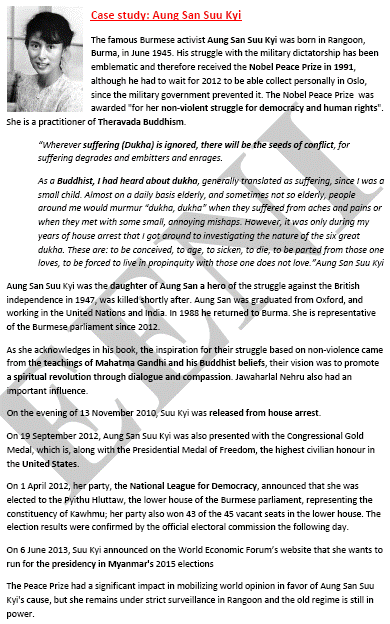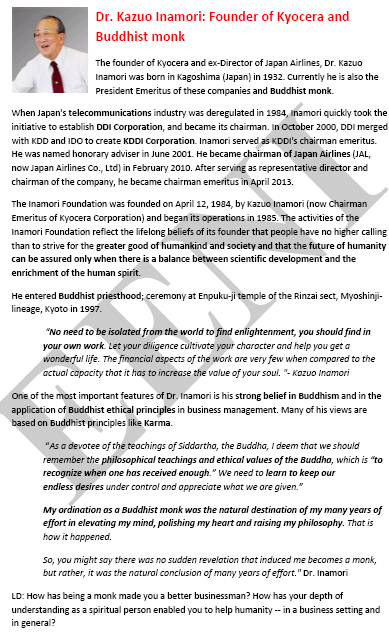Buddhism in the World: China, Japan

230 million of Buddhists, Myanmar, Thailand, Laos, Sri Lanka
- Estimation of Buddhism in the World
- Buddhism in India, Burma, Bhutan, Cambodia, China, South Korea, Japan, Mongolia, Laos, Vietnam, Sri Lanka, and Thailand

The Subject “Buddhism in the World” belongs to the following Online Programs taught by EENI Global Business School:
Course: Buddhism, Ethics and Business.

Doctorate: Ethics, Religion & Business.
Masters: International Business, Religions & Business.
Languages:  or
or  Budismo en el Mundo
Budismo en el Mundo  Bouddhisme
Bouddhisme  Budismo.
Budismo.
Why study “Buddhism and Business”?.
Buddhist Civilization - Ethics Buddhist - Buddhist Economics.
Buddhism in the World.
As in the other religions, figures on the number of Buddhists can vary widely. These numbers range between 170 and 230 million Buddhists worldwide. The main problem is to know the number of Buddhists in China.
Speaking of Buddhism is talking about Asia.

Buddhism has coexisted with the other religions without problems, as in Taoism and Confucianism (China) or Shinto (Japan). In many Asian Countries, Buddhism is closely linked with politics. Even there are several Buddhist political parties.
Buddhism in Bharat (India).
Despite being born in India, Buddhism practically disappeared in the 12th century, but since the late 19th century began to re-emerge. Today, about 8 million Buddhists live in India (0.8% of the population). India is the home of the Tibetan Government in exile headed by the Dalai Lama.
Buddhists are the majority in the state of Arunachal Pradesh, and the Ladakh region in the state of Jammu and Kashmir, in the state of Sikkim account for 40% of the population (Lamaism).
One of the reasons for the growth of Buddhism in India is due to Bhimrao Ramji Ambedkar, who converted from Hinduism to Buddhism. Babasaheb belonged to the caste “Dalit” (untouchables).
Despite being a minority in India, Buddhists are very active in political and cultural life. The former Minister of Rail transport of India, Mapanna Mallikarjun Kharge was Buddhist.
Buddhism in Myanmar (Burma).
89% of the Burmese population (60 million people) practices Theravada Buddhism. Christianity is the second religion (Baptist 3%, Roman Catholic 1%). There is a small minority who practice Islam. There is no official state religion, but the Government opted for the Theravada Buddhism. The new Constitution provides for freedom of worship.
Myanmar motto is “Happiness lies in harmoniously disciplined life” comes from verse 194 of the Dhammapada Pali Buddhavagga.
Maha Thray Sithu U Thant (1909 - 1974), the third Secretary-General of the UN, was Buddhist.
The famous Burmese activist and Nobel Peace Prize Aung San Suu Kyi was born in Rangoon, Myanmar.
Buddhism in Bhutan.
The Tibetan Buddhism influence on politics is high: the Buddhist monks can directly elect the representatives of Parliament. Hinduism is the second religion (25%).
The influence of India on the Bhutanese economy is vital, the currency of Bhutan is the Ngultrum, whose value is fixed to the Indian rupee. The rupee is also accepted as legal currency in the country. Both India and Bhutan are members of the South Asian Association for Regional Cooperation and the Free-Trade Area South Asia.
Buddhism in the Kingdom of Cambodia.
In Cambodia (14 million), the Theravada Buddhism is the majority (95 percent of the population) and is the official religion. It is important to note the strong influence of Hinduism on Buddhism practiced in Cambodia. The vast majority of ethnic Khmer are Buddhist. Cambodia's motto is “Nation, Religion, King”
Kith Meng is an outstanding Cambodian Businessman.
Buddhism in China.
While China is the birthplace of Confucianism and Taoism; Buddhism is the largest religion in China, even though China is declared as an atheistic country, so virtually it is impossible to know the actual statistics on Buddhism in China. Approximately there are 300 million Buddhists in China.
China has demonstrated throughout its history an enormous capacity to assimilate foreign things and make it own. The syncretism with Taoist, Animists, and Confucian elements permeates Chinese Buddhism.
Daisaku Ikeda is the founder of Soka Gakkai International and author of the book “The Flower of the Chinese Buddhism.”
Buddhism in South Korea.
About 50% of Koreans have no religious preference, 30% are Christian, and 23% are Buddhists (10 million).
The Korean Constitution guarantees freedom of religion. There is no official state religion.
Lee Kun-hee (South Korea) is the President of Samsung Electronics.
Buddhism in Japan.
Buddhism is the main religion in Japan, followed by Shinto (official religion until the 19th century). The syncretism, especially with Confucian and Taoist elements; it is important in the Japanese Buddhism.
Buddhism came to Japan from Korea around the year 552. 90 million Japanese claim to be practicing Buddhists (70% of the population).
During the military period Kamakura (1192-1333) was introduced two schools:
- Pure Land amidist school (salvation through belief in the Buddha Amitabha) is the largest Buddhist school in Japan
- School of Zen Buddhism
Soka Gakkai International was created in 1930 by Tsunesaburo Makiguchi (1872-1944) gathers followers of Buddhism Nichiren. Literally, means “Society for value creation.” Its main objective is to promote the peace and respect for life.
Buddhism in Mongolia.
Despite the years of communism, approximately 94% of Mongolians are Lamaist Buddhist (Tibetan Buddhism), whose spiritual leader is the maximum Jebtsundamba Khutuktu (Holy and Venerable Lord). Like the Dalai Lama is regarded as the reincarnation of the Buddha.
Buddhism in the World
Buddhism in Laos.
Despite being a communist country, Buddhism is the majority. Approximately 67% of Laotians are Theravada Buddhist, 1% are Christian, and 31% are not defined.
Buddhism in Vietnam.
86 million of Vietnamese practice Mahayana Buddhism and 2% the Theravada Buddhism. Noteworthy is the syncretism with Confucianism and Taoism. 8% of Vietnamese are Christians (6 million Catholics and 1 million Protestants). In Vietnam have emerged the Buddhist heterodox sects as the Do Hoa-Hao and the Cao Dai.
The Cao Dai was created in 1926 by Van Chien Ngo a Vietnamese official under French administration. It is primarily a syncretic religion with Christians, Muslims, Hindus, Buddhists, Taoists and Confucians elements. The Cao Dai can be practiced by any believer of these faiths. Between 7 and 8 million Vietnamese are followers of Cao Dai.
Buddhism in Sri Lanka.
About 70% of Sri Lankans belongs to Theravada Buddhist School, followed mainly by ethnic Sinhalese. Also, it is important the Tamil Hindu minority and the Muslims. Buddhism was introduced in the third century B.C. By Arahat Mahinda Thera, son of the great Ashoka. The b (Thripitakaya) was compiled in Sri Lanka around 30 BCE.
Buddhism in Thailand.
The main religion in Thailand is the Theravada Buddhism (95% of the population). There are minorities of Muslims, Christians, and Hindus. In Thailand there is no official religion in the Constitution, guaranteeing religious freedom, but the King must be Buddhist to reign. The King, Bhumibol Adulyadej is considered the spiritual leader.
Thailand is home to the World Buddhist Association and the World Buddhist University.
Thaksin Shinawatra Thai Businessman.

(c) EENI Global Business School (1995-2024)
We do not use cookies
Top of this page




